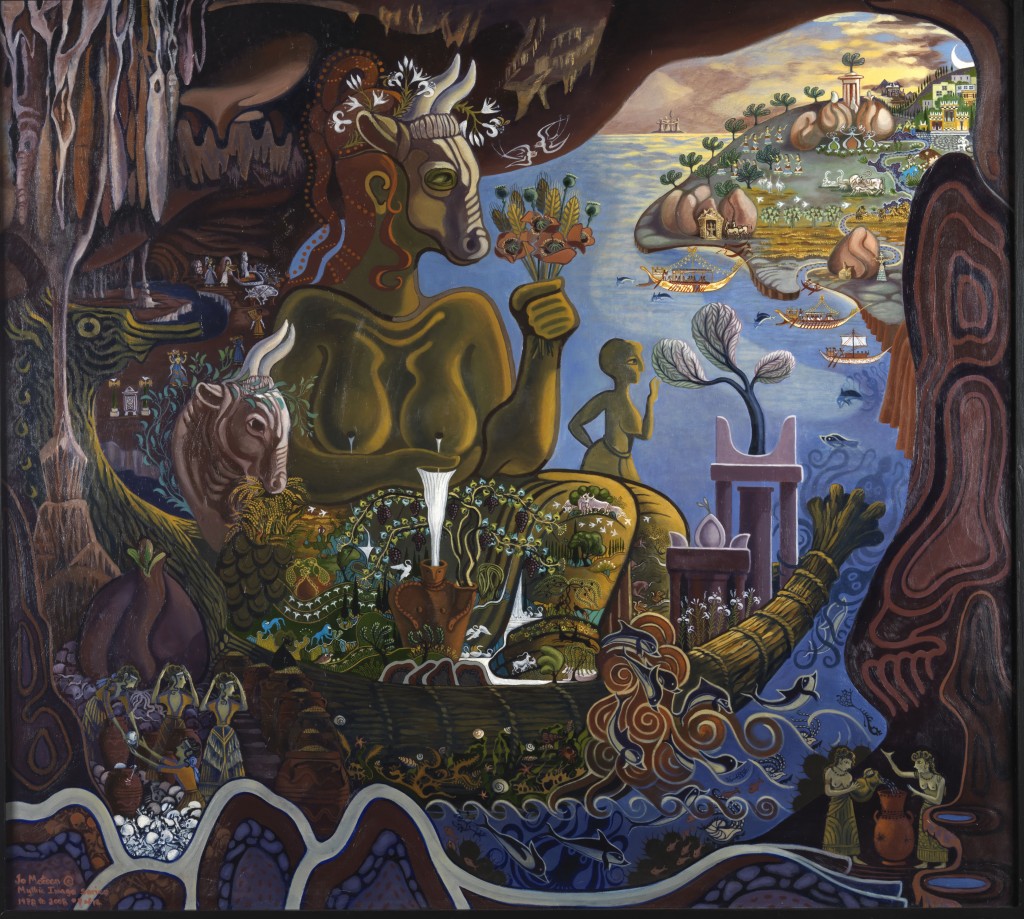This painting represents the Minoan culture of Crete before its destruction by the eruption of Thera and the rise of Greek culture. The earliest shrines on Crete are found in its many caves, often in the form of pillars. The pillar, as a reflection of the stalactites and stalagmites within the cave may reflect the life-giving sexual act. Later Greek myth claims that Zeus was raised in a cave in Crete, nourished from the horn of a goat. Here the female figure sets sail in her boat, as depicted on many seals from Crete, heading from her cave to one of the many Greek islands bringing her life-giving gifts of the olive tree, grain and poppies, important for their mind-altering properties. She is accompanied by a bull, which formed the center of the bull-leaping acrobatics often seen in Minoan wall-paintings, and probably the ancestor of Spain’s bullfighting tradition. She wears the mask of a cow, like Pasiphae in the myth of the minotaur. The two pillar shrines on her boat feature the olive tree sprouting from a seed and surrounded by the horns of the bull. Within the cave, the bones of the dead are being stored in jars, a custom still observed in some Greek villages. The milk of the mother pours into an anthropomorphic jug, which then feeds that landscape making up her lap, from which spring grape vines, a verdant landscape filled with animals and all the life in the sea.
Jo Matsen: Mythic Images
The Mother in the Mountain


Beautiful! Are these available as prints?